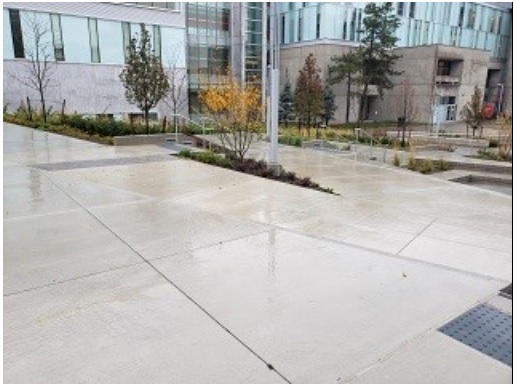4
This section will explore unique, diverse learners and the principles of UDL. It is our hope that the resources presented here will provide you with the guidance to examine a course you are currently teaching, and take some first steps into incorporating UDL into your teaching practice.
Let’s start with an introduction to UDL. Universal Design for Learning is truly universal — it considers the potential needs of all learners when designing and delivering instruction. We will discuss what UDL is and why it is an important guideline for teachers to consider.
What Is Universal Design for Learning?
The concept of Universal Design for Learning originated in architectural studies when design considerations began to focus on physical access and the incorporation of assistive technologies and adaptations to the built environment (e.g., curb cuts).
One vital concept in universal design for physical space is the focus on adaptation. Focusing on adaptation allows access for everyone, including persons with disabilities, to use a space in an easier way. For example, a ramp will allow a teacher to enter a building with a cart full of materials, a person on crutches may use it, and someone with a wheelchair will have access as well.

UDL means that we consider the different ways we can provide “ramps” to our courses, the content, the delivery and the assessment of learning. UDL goes beyond universal design and utilizes what is learned from neural research to provide best-practice guidelines. When we use this approach, we also are adopting EDI principles to meet the unique and diverse needs of all learners!

Tip: UDL challenges us to consider instructional materials and activities that allow the learning goals to be achievable by individuals with wide differences in abilities.
Like building a structure and having it meet building codes to avoid costly renovations later, if we build educational materials with UDL and EDI in mind from the beginning, we can avoid the expense in time and effort needed renovating our courses to bring them “up to code.” Besides, like with those ramps, everyone can benefit![1]
Explore
Often when we create content, we might believe that we meet the needs of the “average” student. In the following video, Todd Rose helps us to explore the “Myth of Average.” As you watch the video, you will be presented with pop-up reflective prompts to consider.
Reflection
Center for Applied Special Technology
CAST (Center for Applied Special Technology), a nonprofit education research and development organization in Wakefield, Mass., has been developing and revising UDL guidelines for almost 40 years. CAST defines UDL as:
a set of principles for curriculum development that gives all individuals equal opportunities to learn. UDL provides a blueprint for creating instructional goals, methods, materials, and assessments that work for everyone — not a single, one-size-fits-all solution but rather flexible approaches that can be customized and adjusted for individual needs.
UDL Guidelines
You can see that the guidelines each have checkpoints to provide more details and possible course adaptations.
Explore
- McGuire, J. M., Scott, S. S., & Shaw, S. F. (2006). Universal design and its applications in educational environments. Remedial and Special Education 27(3), 166-175. https://doi.org/10.1177/07419325060270030501 ↵

